Marine Biosecurity Toolbox scientist Dr Ulla von Ammon joined the BLAKE Expedition and shared with the expedition team the eDNA tools, including the newly designed Cruising Speed Net, for detecting unwanted organisms in marine environments.
From forensic science to marine biosecurity – a new PhD researcher Michelle Scriver joins the team!
by Michelle Scriver
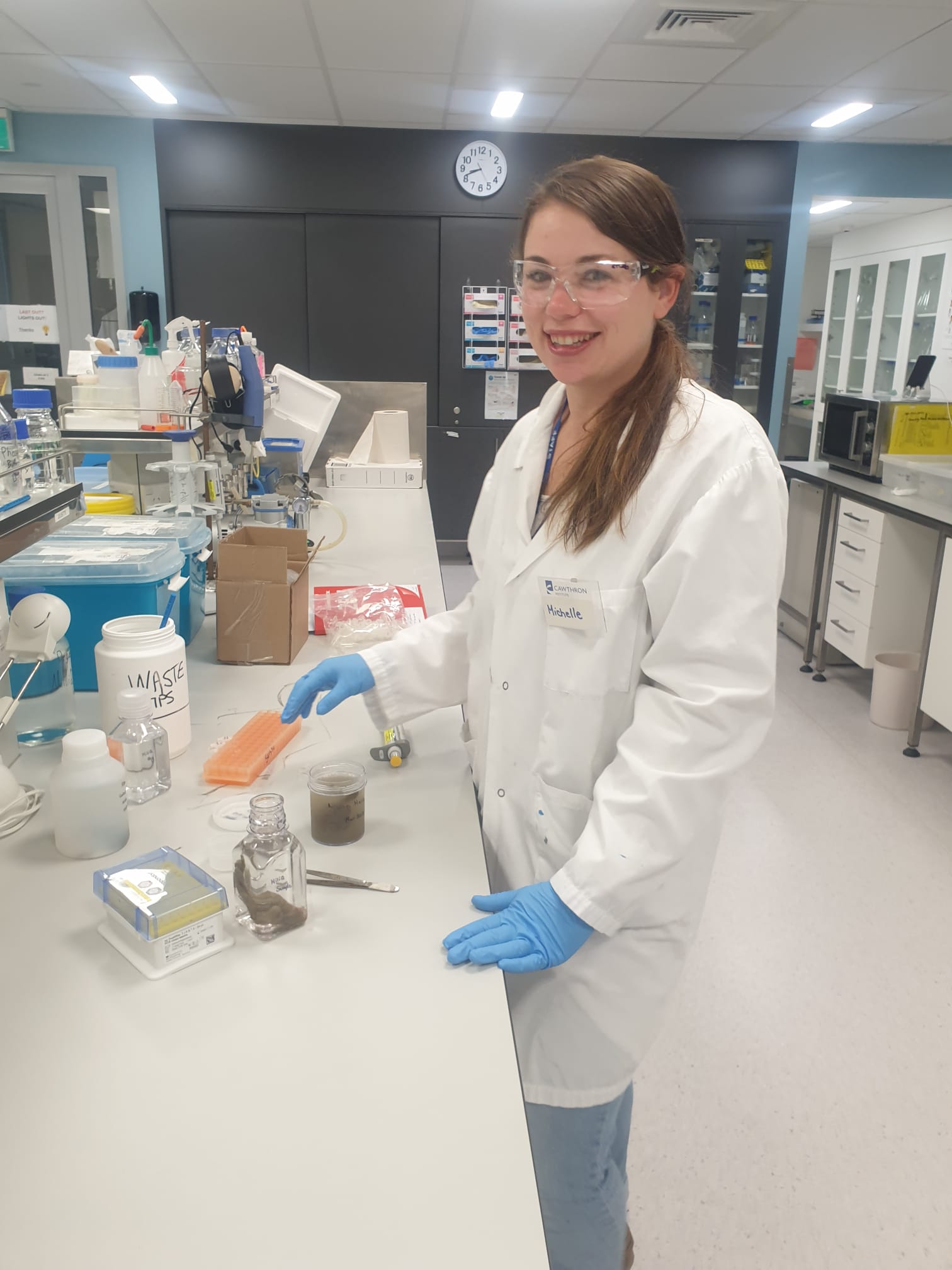
I am a Ph.D. researcher who joined the Marine Biosecurity Toolbox programme at the Cawthron Institute in October 2021.
I am originally from Canada, where I completed both my bachelor’s and master’s degrees. I completed my BSc in Forensic Science at Trent University in Peterborough, ON, Canada. During this degree, I had my first experience of applying my knowledge from forensic science to invasive species. I completed an undergraduate thesis that focused on developing species-specific environmental DNA (eDNA) primers to identify eleven invasive non-indigenous species (NIS) aquatic plant species.
With a passion to continue to explore new areas of research, I decided to pursue a Master of Applied Science in Biotechnology at McGill University in Montreal, QC, Canada. My main project focused on validating markers of chemoresistance in triple-negative breast cancer patients. After graduating from McGill, I accepted a job as a research associate in the Clinical vector core at the Children’s Hospital of Philadelphia, Philadelphia, PA, USA. For the past five years, I have worked in the field of gene therapy, developing, and assessing adenovirus-associated virus (AAV) which could be used to treat patients with rare genetic diseases at both the Children’s Hospital and eventually at Spark Therapeutics, a large gene therapy company.
While the innovative field of gene therapy was both an exciting and promising field to be a part of, I wanted to be working with the environment and contributing to research that could protect it. I once again craved learning and had an earning to continue to explore my research from my undergraduate thesis. That’s when a Ph.D. researcher position within the Molecular Biosecurity Team at the Cawthron Institute in Nelson caught my attention! I was accepted by the University of Auckland and chose to move from the USA to New Zealand to start this amazing new opportunity.
My Ph.D. project is part of the DETECT theme in the Marine Biosecurity Toolbox programme, where we aim to detect marine pests applying cutting edge molecular technologies. Marine pests continue to threaten our coastal marine waters and the local biodiversity. To avoid the damaging effects of marine pests, biosecurity programmes must monitor the coastal waters both for new marine invaders and track and survey current marine NIS. Conventional methods to detect these pests can be expensive, requires taxonomy experts and divers, and can be damaging to the local area. That is where molecular biology and DNA/RNA methodologies have come to the forefront. Scientists have harnessed these molecular techniques by collecting DNA and RNA (collectively nucleic acids (NAs)) which are left behind by marine NIS. Much like how forensic scientists can go to a crime scene and determine the perpetrator, biosecurity scientists can use environmental NAs (eNAs) from the water to determine the marine pests which are present.
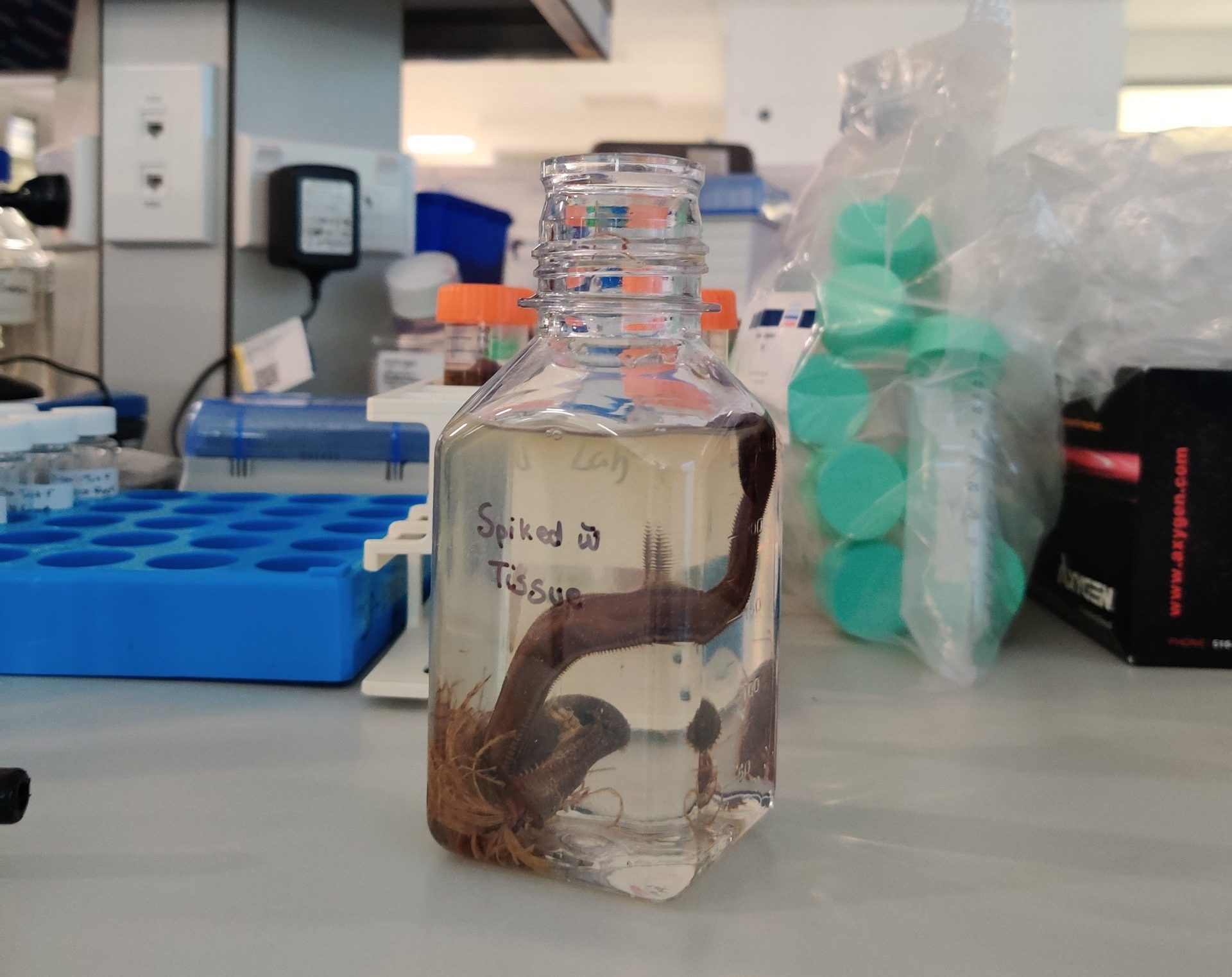
A seawater sample with invasive Mediterranean fanworm, used to test the sensitivity of the modified assay for detecting species eDNA from ambient water
However, like all new technologies, there is still a lot to learn and there are many ways this technology can be further improved and simplified for routine application. Therefore, my project focuses on the optimization of sampling approaches and designs for eNAs based marine biosecurity surveillance. This research aims to answer critical questions regarding eNAs distribution in coastal waters and where, when, and how to sample eNAs to increase the efficiency of marine NIS detection.
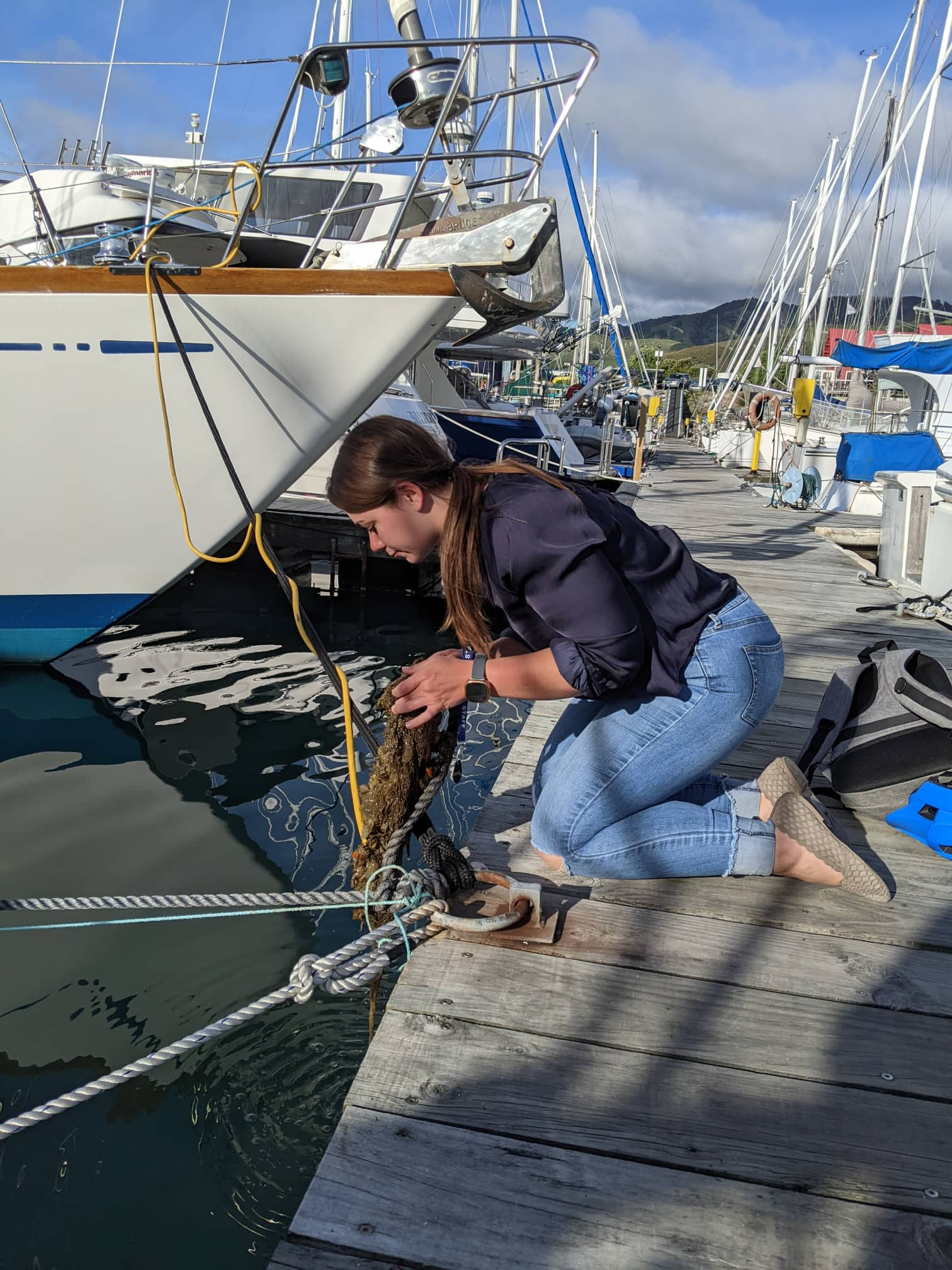
The first part of my research will focus on gaining a better understanding of how eNAs breakdown over time and are distributed throughout the environment. This information can enhance detection probability by determining when and where to sample. With controlled experiments assessing the breakdown of eNAs over time and oceanographic data from other Cawthron scientists, models can be built to predict the source of the eNAs and adjust surveillance design.
Another part of my project is exploring the importance of sampling approaches and strategy on eNAs signal detection in a coastal ecosystem. The Marine Biosecurity Toolbox team has built and explored new tools and technologies to increase the eNAs yield and improve sampling, including optimized cruising speed nets and exploring self-preserving backpack samplers. These technologies are tested in the field and assessed to see which tool is the best fit for the job.
Lastly, it is essential as an emerging technology to explore innovative methodologies and detection equipment that will improve the sampling pipeline and collect data in the field in real-time. The last part of my project is collaborating with others who build these emerging technologies and help to test them within a coastal environment.
I am excited to continue to learn and be part of this amazing team at Cawthron!

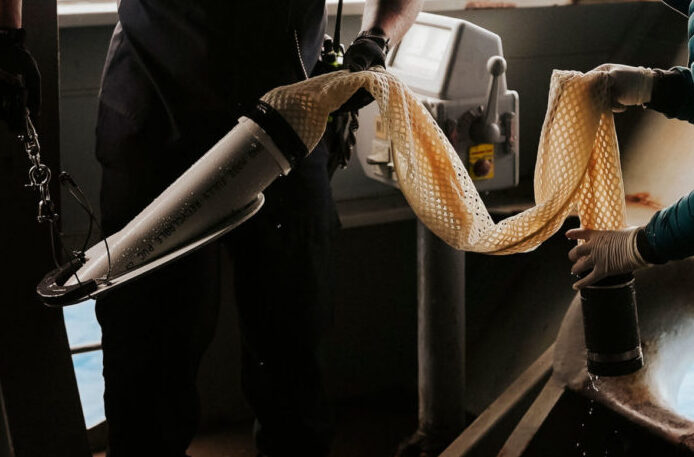
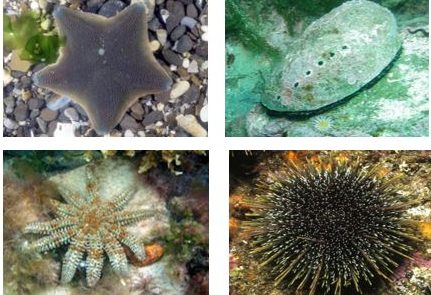
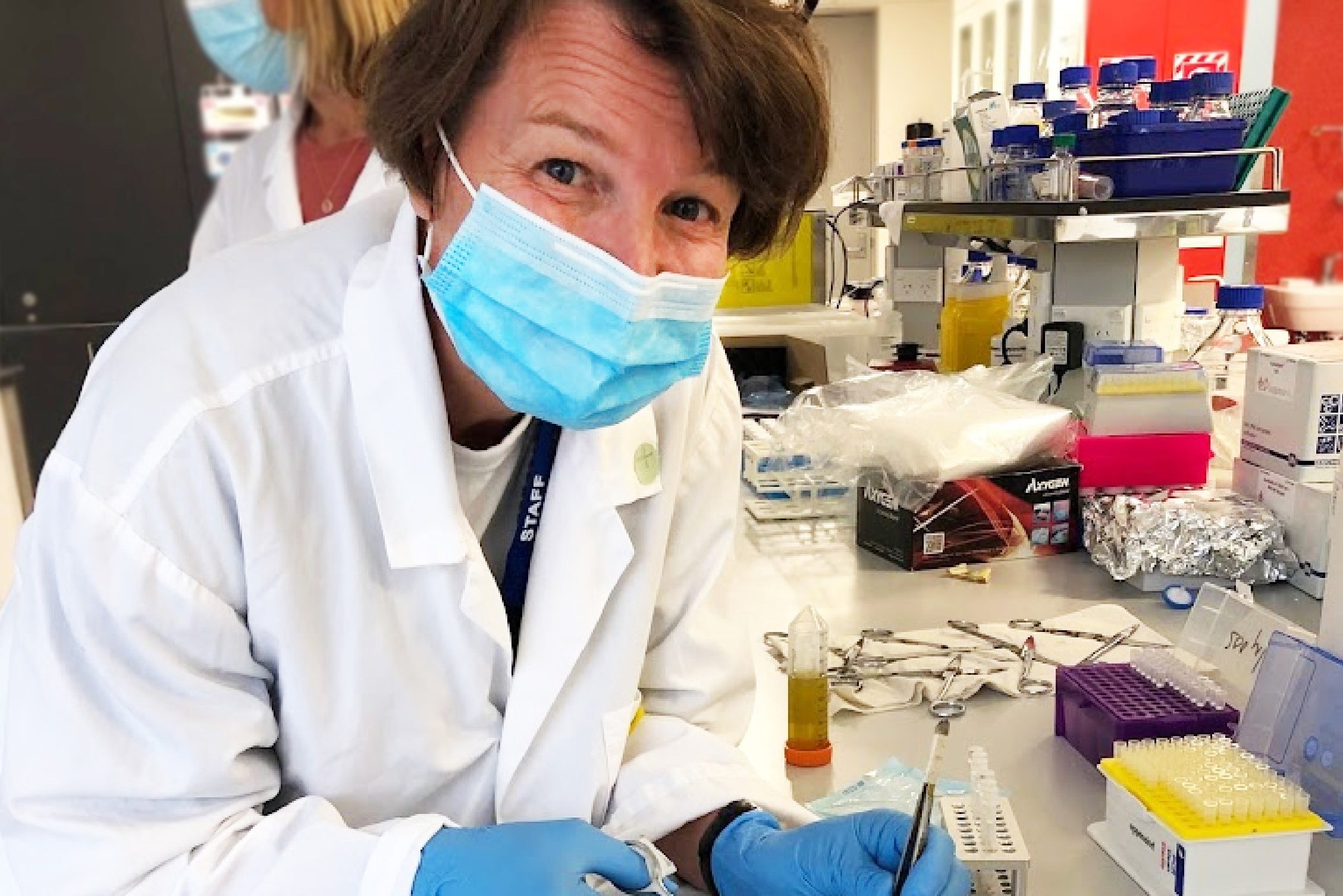
Comments (0)